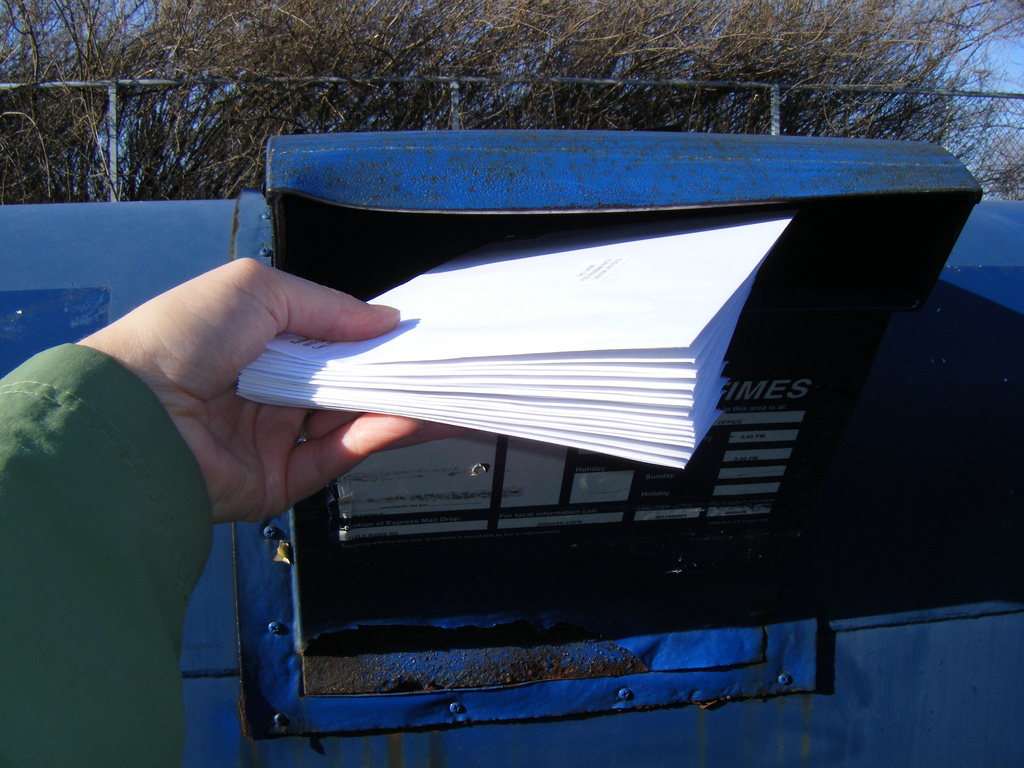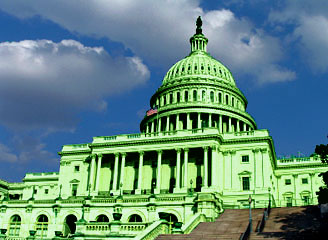 What are the U.S. House and Senate doing about climate change and energy? Here’s a rundown on legislation proposed in Congress this year.
What are the U.S. House and Senate doing about climate change and energy? Here’s a rundown on legislation proposed in Congress this year.
In the House …
• American Clean Energy and Security Act of 2009
A comprehensive climate and energy bill sponsored by Henry Waxman (D-Calif.) and Ed Markey (D-Mass.), this has more momentum than any other legislation on these issues. It passed in the Energy and Commerce Committee on May 21, and has won praise from President Obama. The bill would use a cap-and-trade program to cut planet-warming emissions 17 percent below 2005 levels by 2020 and 83 percent by 2050. It would also require as much as 20 percent of electricity to be produced from renewable sources, and would set tougher energy-efficiency standards. For more on ACES, check out our handy guide.
• Cap and Dividend Act of 2009
Rep. Chris Van Hollen (D-Md.) introduced this cap-and-dividend bill in the House in April 2009. It would put a cap on carbon emissions in 2012, and aim to reduce emissions at least 80 percent by 2050. All pollution permits under the cap would be auctioned, and proceeds would be returned in the form of a flat rebate to “every American with a Social Security number” to help offset rising energy costs.
• Clean Environment and Stable Energy Market Act of 2009
Introduced by Rep. Jim McDermott (D-Wash.), this bill aims to cut greenhouse-gas emissions 80 percent by 2050. Under the plan, polluters would buy emission permits but would not be able to trade them. The Treasury Department would set the price, and that price would rise as the number of available permits declined. Revenues from sale of the permits would go into a trust fund, which could be used to compensate citizens for increased energy costs or support clean energy projects, though the bill doesn’t specify how the funds would be spent. Some have dubbed this “cap-and-no-trade.”
• America’s Energy Security Trust Fund Act of 2009
This carbon-tax bill, sponsored by Rep. John Larson (D-Conn.), would impose a tax of $15 per metric ton of carbon emissions at the source, and that price would increase by $10 every year. If, after five years, that isn’t enough to get the country on the path to cut emissions 80 percent from 2005 levels by 2050, then the tax rate could rise $15 per year. In the first 10 years, 96 percent of revenue generated would be refunded to taxpayers via payroll-tax rebates, with the remainder going to clean-energy tax breaks and transition assistance for workers in carbon-intensive industries.
• Safe Markets Development Act of 2009
Introduced by Reps. Lloyd Doggett (D-Texas) and Jim Cooper (D-Tenn.), this bill would guide the auction of pollution permits. This isn’t a complete cap-and-trade bill, but it addresses the distribution of permits within a cap-and-trade program and could be attached to a broader climate bill. The measure would create an independent board — made up of climate experts, the EPA administrator, and the secretaries of energy and treasury — that would set the price of pollution permits in order to meet emission-reduction goals between 2012 and 2020.
• Green Bank Act of 2009
This bill, another from Van Hollen, would create a national Green Bank to fund clean-energy and efficiency projects. The bank would be an independent, tax-exempt corporation of the federal government, and would issue $10 billion in “green bonds” through the Department of Treasury each year.
• 21st Century Energy Technology Deployment Act of 2009
Introduced by Jay Inslee (D-Wash.) and Steve Israel (D-N.Y.), this bill would provide financing for renewable energy technologies. It would create a Clean Energy Deployment Administration to offer a broad range of direct and indirect financial support mechanisms for low-carbon and net-zero-carbon technologies. John Dingell (D-Mich.) introduced a version of this bill as an amendment to the Waxman-Markey bill, and it was approved by the Energy and Commerce Committee with wide bipartisan support.
In the Senate …
Not a single climate bill has been formally introduced this year in the Senate, though several senators have said they are working on legislation. The real action so far has been on energy legislation, and the Energy and Natural Resources is at work on one big energy bill that packages a number of measures together. The committee has marked up many components, and expects to make a decision on the entire package in June. Here are the more important components of the package, some of which are still in draft form.
• Federal Renewable Electricity Standard
This draft bill from Democrats on the Energy and Natural Resources Committee would require utilities to generate 15 percent of their electricity from renewable sources by 2021. A little more than a quarter of that goal could be met with efficiency measures.
• 21st Century Energy Technology and Deployment Act
Much like its companion bill in the House (see above), this bill would create a Clean Energy Deployment Administration within the Department of Energy to provide financial support for low-carbon and net-zero-carbon technologies.
• Restoring America’s Manufacturing Leadership Through Energy Efficiency Act
This bill, from Sen. Jeff Bingaman (D-N.M.), would provide loans to help manufacturers start using more energy-efficient equipment and processes, and create government partnerships with industry to develop and deploy new efficient technologies.
• Appliance Standards Improvement Act
Bingaman and Sen. Lisa Murkowski (R-Alaska) introduced this bill, which would update the Department of Energy’s appliance standards program and the federal Energy Star program.
• Energy and Water Integration Act
Also from Bingaman and Murkowski, this bill calls for more study into the water use involved in transportation fuels and electricity generation.
• Department of Energy Carbon Capture and Sequestration Program
Introduced by Bingaman and a bipartisan group of seven other senators, this legislation would provide long-term liability protection and funding for up to 10 large-scale carbon-capture-and-storage projects, with the Department of Energy determining which projects should receive funding.
Find out more about climate change and what you can do about it in our Climate Citizens section.



